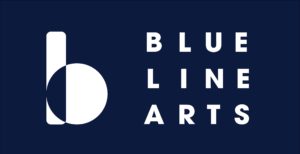Interview with Artist Mason Hershenow
Featured artist, Mason Hershenow, comments on photography as a medium, personal influences, Sacramento as a place amid great change and the future of his work. Hershenow’s solo exhibition On The Rise: The Quiet Capitol is on view through November 18th in the WestPark Workshop Gallery.
When did you first get involved in photography? I’ve pretty much always been interested in photography, and art in general; at least for as long as I can remember. I got my first camera, a HP digital point-and-shoot, when I was fifteen or sixteen and took my first photography class shortly afterward. I originally wanted to be a cartoonist or graphic designer though; photography didn’t become my focus until college, where it quickly became my major.
What is it about the medium of photography that interests you? Art photography, like most art forms I suppose, requires knowledge in a great number of fields: art and cultural history, chemistry, physics, psychology, mechanical engineering, etc. But at the same time, it is an incredibly accessible medium; almost everyone has a camera of some kind and understands, on some level, how to look at photographs. This dichotomy is what attracts me most, I think. To photograph well, one must dedicate their time to a great deal of study and practice, but if executed well their work can be appreciated by almost anyone.
What would you say is the driving force behind your work? Like many people, I strongly associate photography with memory. As much as it is my chosen art form, it’s also a tool: photography documents my life and the way that I see things at a particular time. And, like memory, it can distort a narrative or leave it incomplete. As a result, much of my work, including ‘The Quiet Capitol’, deals with documenting and remembering things a certain way. It’s a way to freeze time so that you can look back and understand the subject in a different way than you could when you were there.
Can you elaborate on your subject matter? What is it about the changing landscape of the city the interests you most? The changes happening in Sacramento right now are, in many ways, proving to be very divisive. The new arena is particularly problematic: while it has, and will hopefully continue to, bring in a massive amount of commercial investment in the downtown and midtown areas, there remains a large number of residents with very serious and real concerns about the project. Infrastructure is seriously lacking and housing costs are skyrocketing, and there are a lot of people young and old caught in the middle of all of it. It’s that level, the street level view, that often gets overlooked when all of this development gets talked about, that interests me most. That’s what I wanted to capture with this project: the day to day of a city that’s being hurtled forward.
Specifically, what are some of the photographic techniques you employed in the making of these works? And, how does your specific photographic process relate to what your content? All of the images were shot on various speeds of Ilford black and white 35mm film using a mix of toy cameras and vintage SLRs, then scanned and printed from the digital images. You could say the materials reflect a transitioning world in themselves, a mix of traditional and digital techniques.
What other artist do you draw inspiration from? I am hugely inspired by Walker Evans and Robert Frank, particularly their books American Photographs and The Americans, respectively. Their honest and often brutal depictions of the America they knew have influenced my approach to street photography for many years now. I’m also strongly influenced by the work of American photographer Lee Miller during her Paris years while she was studying under and working with (and influencing) Man Ray.
What would you most like people to take away from seeing your show? I’d like people to leave the show more aware of their own city and the people around them. We all want progress so terribly that we sometimes forget what is already in front of us, and what effect a change that seems to be positive for oneself could have on those we don’t know.
Has your experience exhibiting at Blue Line Arts given you insights on this body of work? It was nice to finally see the work hung all at once. I’ve been looking at these images individually for so long that getting to see the bigger picture assembled was very satisfying. It also showed me that there is still more work to do.
Where do you see your work going from here? The body of work will be expanded to a planned 100-150 images. I’m also working on putting it together in a book, which I’m hoping to complete within the next year.
Interview conducted by Chelsea Thompto

